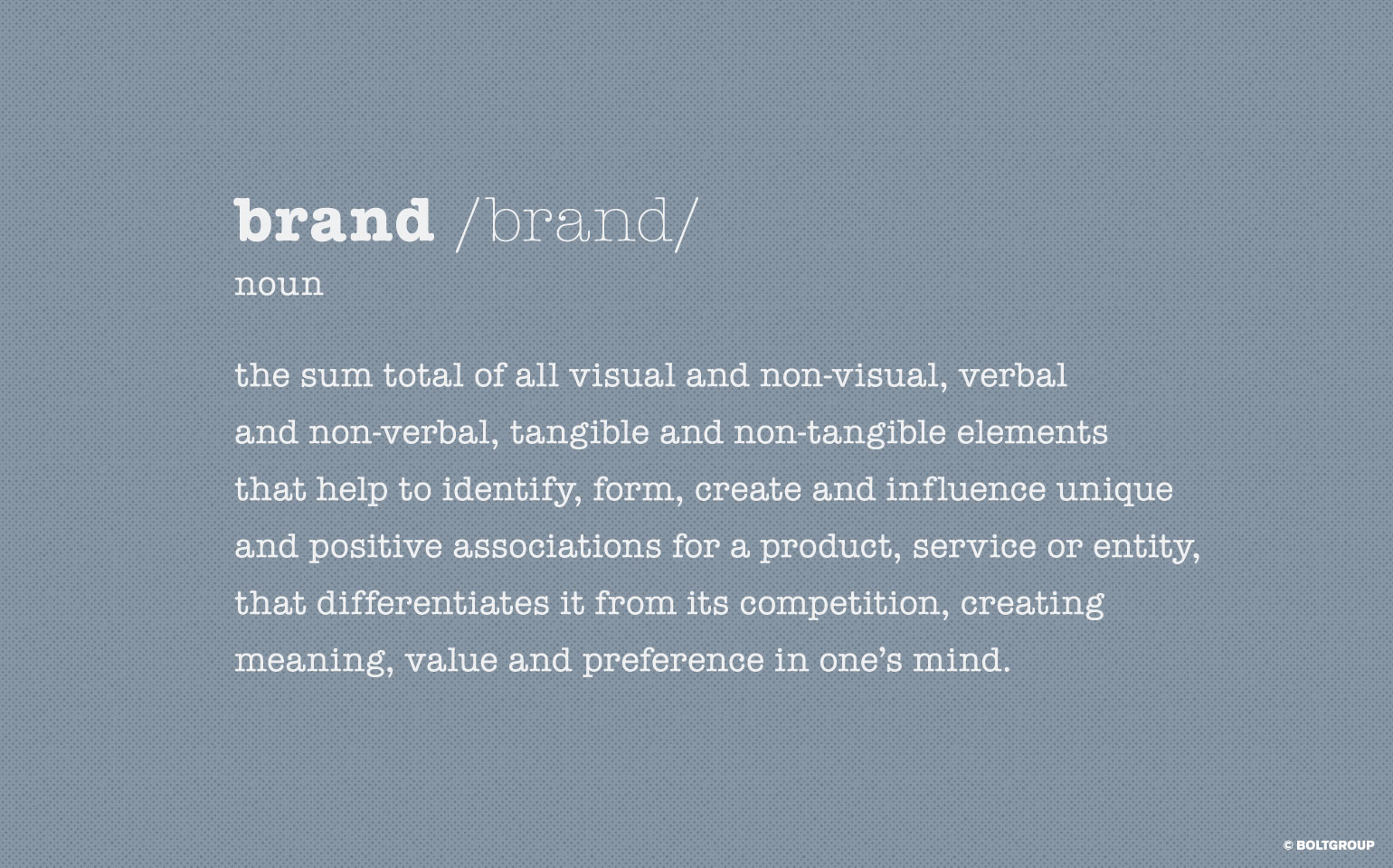Brand. The word is now ubiquitous in our vernacular. How many conversations have you had lately where the word “brand” came up, and you weren’t quite sure what was actually being referenced? The word has become so over-used in everything from sales and marketing to politics and people, that it has nearly lost its meaning. Many say they do “brand” but they really don’t. They do digital. Or advertising, Or PR. Or marketing. BOLTGROUP not only knows what brand means, but when properly deployed and managed, how it can change your business.
Webster runs the gamut when it comes to defining the word “brand.” From a mark burned into wood to attest manufacturer or quality or ownership, to a mark put on criminals, to a class of goods identified by name, to a characteristic of something, to a tool used on cattle ranches. BOLTGROUP has a much more intricate definition of brand. In the marketing world, brand is a very complex subject.
BOLTGROUP’s definition of brand: a brand is the sum total of all visual and non-visual, verbal and non-verbal, tangible and non-tangible elements that help to identify, form, create, and influence unique and positive associations for a product, service, or entity that differentiates it from its competition, creating meaning, value, and preference in one’s mind.
So, a bit more involved than first meets the eye. Or ear. To say “brand” means anything less, does not do justice to the importance it should have as an asset to your business—perhaps your greatest asset. It is the brand that influences and drives behavior based on its relationship to the organization. It is the brand that helps shape and mold the perception of your company, your products, and your people. As Professor Nader Tavassoli of the London Business School says, “Brand is not the icing on the cake. Brand is the cake.”
9 Subsets of Brand
Within a brand there are subsets, each interdependent upon one another. Every element of a brand has a symbiotic relationship with the other, and all should be clearly reflected in the business goals of the organization. Every subset has an inward-facing and an outward-facing responsibility back to the brand and organization to communicate with truth, transparency, authenticity, simplicity, and clarity. Subsets include:
- Brand Purpose. Why the brand exists with respect to the positive difference and influence it makes in people’s lives, inside and outside of a company.
- Brand Pillars. The compelling truths of the brand—those attributes that communicate the core beliefs, culture, and values that must be present when experiencing the brand through every touchpoint.
- Brand Positioning. The strategic intent or design for a differentiated image of the brand toward a particular target audience, as manifested initially through a statement that reflects how the brand is to be perceived.
- Brand Personality. The voice of the brand—describing the point of view of the brand, defined by the tone and the manner in which the brand will communicate, conjuring up images of attributes the brand possesses. A glimpse into the soul of the brand, and the feeling the brand has for life.
- Brand Story. A narrative that conveys why the brand exists, as portrayed through the voice of the brand, supporting the purpose and promise to drive meaning of the brand to an emotional level with its constituents.
- Brand Value Proposition(s). The sum total of benefits, which a brand promises each different targeted customer segment, based on the order of importance and value of the individual brand pillars, all assimilating back to the brand purpose.
- Brand Identity. The intentional design, name, and/or symbol that distinguishes a product, service, or entity from any other.
- Brand Experience. The intentional design of moments that physically, visually, and verbally integrate into people’s lives and their lifestyle, expressing the purpose, pillars, and positioning of the brand, and triggering an emotional response.
- Brand Image. The collective set of associations attached to the brand identity and brand experience [influenced by all the others] in the minds of its constituents.
Now ask yourself a couple of questions. What brands do you admire? What brands come to mind as being symbiotic in their relationship to their business and with their products? Chances are those brands have a few things in common. One of them being their definition of brand. They think about brand in the terms described above. And they put brand at the center of their business. So, if your brand wasn’t one of the brands you thought of, it’s possible that it could use a better definition. We can help with that.
